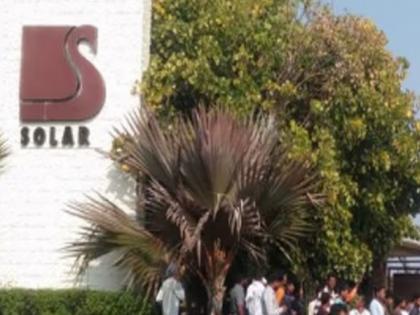What explains the Nagpur blasts despite of 8 safety drills in a year?
By Lokmat English Desk | Updated: December 19, 2023 10:45 IST2023-12-19T10:44:08+5:302023-12-19T10:45:11+5:30
Nagpur: The Sunday blasts in Nagpur’s explosives factory have sent shockwaves across the country. Given the company’s ties with ...

What explains the Nagpur blasts despite of 8 safety drills in a year?
According to the sources, ‘Solar’ had conducted around 8 drills annually as part of their safety protocol. Shockingly, despite its dealings in explosives, Solar is not included in the list of extremely hazardous factories. Solar Industries produces gunpowder and weapons required by the defense forces. Thus, it is important to ensure that the production process is undertaken with utmost precaution while making space for regular safety inspections. According to rules laid out by the Industrial Safety Directorate, it is expected to conduct mock drills every six months in the presence of the officials from the directorate. However, due to an insufficient number of officers, the company undertook the drills independently without external supervision and sent the reports.
District has 27 extremely hazardous factories, Solar not among them
The Directorate of Industrial Safety and Health is responsible for making a list of factories under its umbrella. Some of the industrial units are deemed as extremely hazardous of which Nagpur has 27. However, despite its dealings in gunpowder and explosives, Solar Industries does not feature in this list. When asked by an official who requested anonymity, they agreed that Solar should have been on the list of extremely hazardous factories. While explaining the reasons, it was found that a mere 2-3 officers are overseeing the work of around 11 districts. It is next to impossible to inspect every single one of the 2000 industrial units, stated the official. While contacted for a response, Upper Director V V Londhe was engaged in a meeting and could not be reached. Open in app